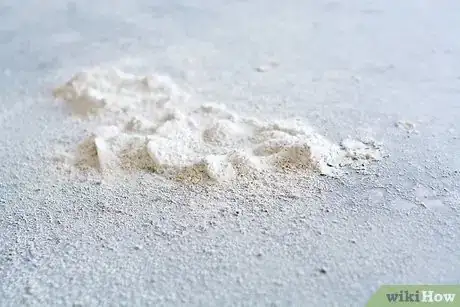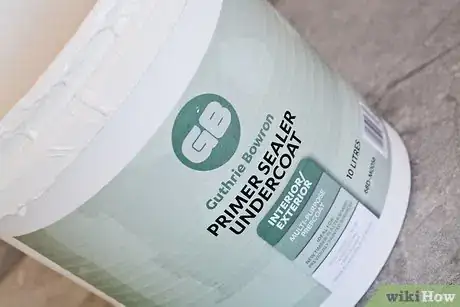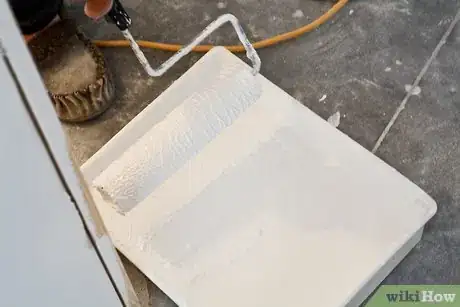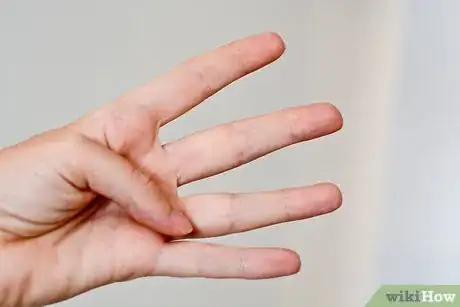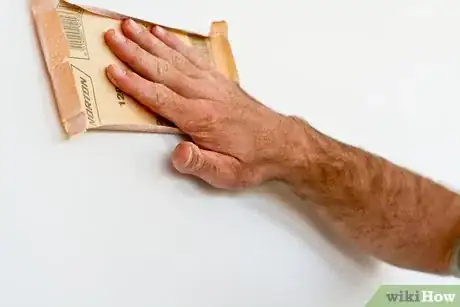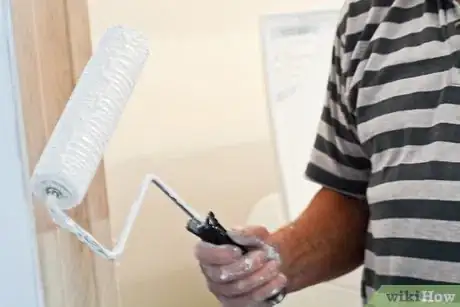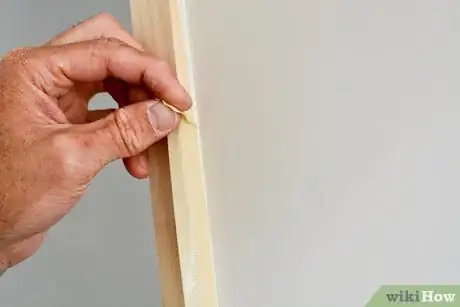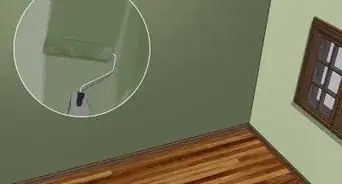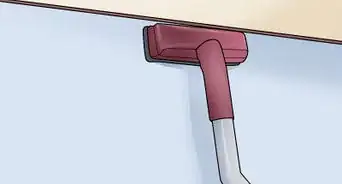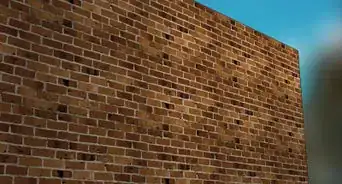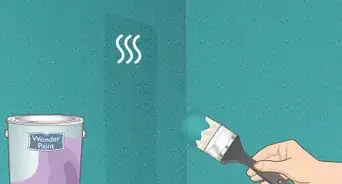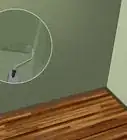This article was co-authored by Laura M. Johnson. Laura M. Johnson is a Mural Artist and the Owner of Laura Margo Murals & Custom Art in St. Paul, Minnesota. She has over five years of experience in the industry and has worked professionally across venture capital, communications, the arts, and beyond. She helps empower small and growing businesses to find their voices, share their stories, and grow their impact. Laura received her Master of Business Administration from the University of Minnesota - Carlson School of Management, and her Bachelors in Journalism and Communication Studies with a minor in Fine Arts from the University of Oregon.
wikiHow marks an article as reader-approved once it receives enough positive feedback. In this case, 93% of readers who voted found the article helpful, earning it our reader-approved status.
This article has been viewed 175,451 times.
Sheetrock, also known as drywall, is a type of plaster surface used to provide a durable and sturdy surface for interior and exterior walls. It is usually installed with glue or screws, and, after installation, finished with a plaster surface that is then sanded down until smooth. Painting over sheetrock hides the plaster's irregularities and adds color to a room; it can also seal the sheetrock to protect it from water damage. Before painting, always prime the sheetrock to provide a coat for the paint to adhere to and to help give a more even appearance.
Steps
-
1Remove all sanding debris.[1]
- Sanding down sheetrock produces thousands of small particles that must be removed before applying paint. Use a vacuum with a brush extension and go over the sheetrock until it is clean. You can also use a micro-fiber cloth and rub the sheetrock down to remove particles.
-
2Cover all holes, nails, and screws with joint compound or masking tape.[2]
- The sheetrock needs to be an even surface before you can begin painting. Fill holes and cracks with joint compound. Nails, screws, and other protrusions can either be covered over with joint compound or temporarily covered with masking tape.
Advertisement -
3Choose a primer.[3] All surfaces must be primed before painting, including sheetrock. Do not skip this step! Apply in thin layers; follow the label instructions for how many layers are required.
- Your primer will seal the sheetrock from water, cover over all irregularities in the surface, and provide a coat for the paint to adhere to. Polyvinyl acetate (PVA) is designed specifically for sheetrock. Latex paint is also an effective primer.
- Choose a primer that roughly matches the color of your final coat of paint. Approximating the color is fine. If you are using light paint for your second coat, be sure not to use a dark color for your primer.
-
4Apply the primer with a paint roller.[4]
- Dip the roller into a pan filled with the primer. Roll the primer onto the sheetrock in "M" or "W" designs so that the roller is constantly in motion; go back over these designs to fill in the gaps. You should create an even coat over the sheetrock so that no roller marks are evident.
-
5Let the primer dry for about 4 hours.[5]
-
6Go over the primer coat with sanding paper to remove any imperfections. Clean the dust off with a vacuum or micro-fiber cloth.[6]
-
7Apply the first coat of paint with a paint roller.[7]
- Use the same technique that you used with the primer. Apply a thick coat of paint to hide any imperfections in the sheetrock.
- Suitable paint for sheetrock would be 100% latex, acrylic latex, or artist’s acrylic paint. Acrylic and latex paints breathe, and provided they are applied properly, they will be durable and long-lasting.
-
8Let the first coat dry for about 4 hours.
-
9Go over the first coat of paint with sanding paper to remove any imperfections. Clean the dust off with a vacuum or micro-fiber cloth.
-
10Apply a second coat of paint.[8]
-
11Let the second coat dry for about 4 hours.
-
12Remove all tape from the sheetrock.
Community Q&A
-
QuestionWhen I install sheetrock, do I have to add texture to the walls?
 DonaganTop AnswererMost people don't. It's a matter of personal preference.
DonaganTop AnswererMost people don't. It's a matter of personal preference. -
QuestionShould you use flat or satin paint for the walls?
 DonaganTop AnswererSatin is easier to keep clean.
DonaganTop AnswererSatin is easier to keep clean. -
QuestionShould you still use primer if the paint has primer in it?
 DonaganTop AnswererNo.
DonaganTop AnswererNo.
Things You'll Need
- Vacuum or micro-fiber cloth
- Joint compound
- Masking tape
- Paint roller
- Paint pan
- Primer (polyvinyl acetate or latex paint)
- Latex or satin paint
References
- ↑ https://www.bradthepainter.com/painting-drywall/
- ↑ https://www.familyhandyman.com/drywall/drywall-repair/how-to-paint-walls-prepare-interior-walls-for-painting/
- ↑ https://www.youtube.com/watch?v=ETRU3AxYq0w
- ↑ https://www.youtube.com/watch?v=ETRU3AxYq0w
- ↑ https://www.youtube.com/watch?v=ETRU3AxYq0w
- ↑ https://www.youtube.com/watch?v=McKzQqQcEGg
- ↑ https://www.youtube.com/watch?v=yh8gqk2the0
- ↑ https://www.youtube.com/watch?v=yh8gqk2the0
